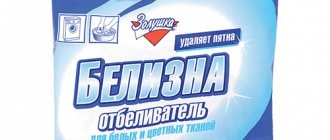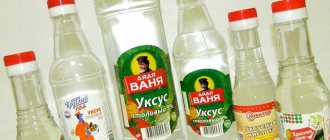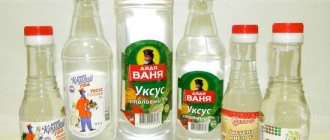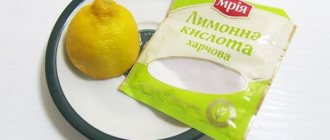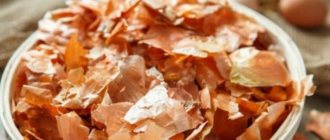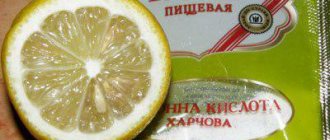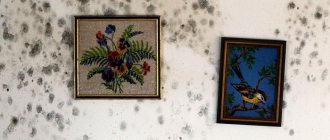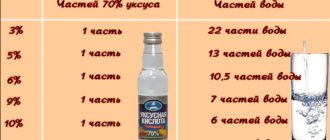Acetic acid is used in a large number of culinary recipes. It can also be used in the preparation of various medicinal mixtures according to folk schemes. Vinegar of varying concentrations can be used as an ingredient. Sometimes 70 percent is required, which is sold ready-made in the store. Sometimes a 3-, 5-, 7-, 9 percent solution is needed. To obtain it, you need to dilute the liquid that is already available. This way you can get a product suitable for any of your purposes. In this article you will learn how to dilute 70 percent vinegar.
Photo from the site: womenssecretszone.ru
What does vinegar essence consist of?
70% vinegar essence consists of acid and ordinary water. Of the total volume, 7 parts are directly acid, and 3 parts are water. Sometimes the ratio is different, which is shown on the label. The product is not used in this form as it is too concentrated. Table vinegar, which is sold in the store, is already diluted to a certain extent. You may ask, why then dilute the essence if it is possible to purchase a ready-made version? The answer is simple: it’s more economical. From one tea-sized spoon you will get a whole glass of already diluted table vinegar.
Keep the essence out of the reach of children. They can drink a concentrated solution, which will cause burns to the mucous membrane of the throat and damage to the esophagus.
In the store you can find table vinegar of different concentrations. But there is no guarantee that you will immediately find exactly the product you need. It is not worth buying 3% vinegar instead of 9% vinegar. It’s better to dilute the essence yourself to the required concentration.
Photo from the site: www.liveinternet.ru
Interchangeability of essence and vinegar
In fact, these 2 liquids are completely interchangeable, since they are made from the same raw materials and differ only in concentration.
For example, 9% vinegar consists of 1 part essence and 7 parts water. Those. 8 spoons of 9% vinegar contain 1 spoon of essence and 7 water. Their ratio is 1 to 7.
Knowing the correct ratio of essence and water in table vinegar of a certain concentration, you can easily calculate the required amount of components mixed to obtain it:
- 3% - 1 ml of essence and 20 ml of liquid (1:20);
- 4% - 1 ml of acid and 17 ml of water (1:17);
- 5% - 1 ml of vinegar essence and 13 ml of liquid (1:13);
- 6% - 1 ml of food acid and 11 ml of water (1:11);
- 9% - 1 ml of essence and 7 ml of liquid (1:7).
Important!
Vinegar essence can be dangerous in its pure form. Only 20 ml of the product is a lethal dose for humans, so strictly observe the proportions and caution when handling it
.
How to breed?
Dilute 70% acetic acid with water. They do this in accordance with the proportions. They are unique for a specific solution. People with mathematical abilities will quickly figure out how to do everything. For those who didn’t particularly like to count at school, there is a detailed table.
First formula
In order to correctly calculate the proportion, decide on the amount of vinegar you need. Convert it to grams. This will be the end result. To get it, you need to take the original amount of vinegar essence, multiply it by the percentage of the available concentration and divide by the percentage of the desired concentration. What emerges is a unique formula that is accurate and practical.
Photo from the site: www.liveinternet.ru
Second formula
If the first option seems difficult to you, you can try another formula, which is also quite easy to use.
How to dilute vinegar 70% and find out how much essence you need to take? The amount of initial liquid will be equal to the required concentration of the solution, multiplied by the final volume required in a particular case, and divided by the initial concentration. Thus, you can calculate how much essence to take to get the required amount of table vinegar.
When diluting vinegar essence, make sure that it does not get on the mucous membranes of the eyes. Also, try not to breathe in the vapors from this product. All this is unsafe!
Acetic acid must be diluted in a glass container. First, water is poured into it, and then vinegar essence is added.
Photo from the site: www.liveinternet.ru
Precautions and safety precautions
And finally, let us remind you about the necessary precautions when diluting vinegar. It is better to carry out this operation with gloves and take care of eye protection.
Avoid contact of the concentrate with the skin, especially the mucous membranes of the eyes and mouth. But if such a nuisance does occur, rinse the affected area under cool running water.
Store vinegar essence and vinegar in a dark place out of reach of children. Remember, this is an acid and can be harmful to your health if not handled correctly.
Some ready-made calculations
You don’t have to rack your brains, but use ready-made, calculated proportions. We will give you the most popular of them as an example.
- If you need 30% vinegar, then dilute the essence using a ratio of 1:1.5.
- To prepare a 10% solution, combine 1 part acid with 6 parts water.
- How to dilute 70 vinegar to 9 percent? To get this result, use a ratio of 1:7.
- To make 8 percent vinegar, mix 1 part vinegar and 8 parts water.
- For a 7% solution, a proportion of 1:9 is needed.
- If you combine water and acid in a ratio of 11 to 1, you get a liquid with a concentration of 6%.
- The ratio of vinegar essence and water in a ratio of 1:13 will give a 5% vinegar solution.
- A proportion of 17 to 1 part will give vinegar with a concentration of 4%.
- A 3% solution is made from 22.5 parts water and 1 part 70% vinegar essence.
Information on how to dilute 70 percent vinegar can be presented in a convenient table. By hanging it in the kitchen, you can always use ready-made calculations in a timely manner.
Online vinegar calculator
Here, I found some interesting information that might be useful to someone: Characteristics of different types of vinegar Conventionally, all types of vinegar can be divided into two types depending on the preparation method: synthetic and natural. Synthetic (also called table) is preferred by many housewives in our country, using it for acidifying dishes and sauces, for canning, and for loosening dough. It is a product of chemical synthesis of natural gas or sublimation of wood. Synthetic vinegar was first synthesized by the German chemist Hoffmann in 1898; since then, the technology for its production has undergone many changes, but the essence - artificiality - has remained unchanged. The strength of synthetic vinegar is 7-9%. Synthetic vinegar has become popular in many countries around the world due to its low cost. But this type of vinegar is not beneficial for humans. Over time, it was banned in France and the USA. Unfortunately, in the countries of the former USSR this product has not lost its popularity. Synthetic vinegar is the basis for the production of vinegar products. This product is great for removing stains and restoring frequency in the house, but it should not be eaten. Natural vinegar is the result of fermentation of alcohol-containing raw materials with the help of acetic acid bacteria. Natural vinegar is obtained from grape wine, apple cider, beer wort, and fermented fruit and berry juices. Therefore, natural vinegar contains not only acetic acid, but also other fruit acids, such as malic, citric, lactic, as well as ascorbic acid, aldehydes, pectins, esters and other organic compounds. All of the above listed substances that make up vinegar give the product its original taste, aroma, as well as consumer characteristics. The strength of natural vinegar is 4-6%. Natural vinegar, unlike table vinegar, may contain slight sediment. Due to the fact that natural vinegar is made from various ingredients, there are its varieties: Balsamic vinegar (Italy) White grape variety with a high sugar content Thick, more or less dark liquid with an exquisite harmonious sweet and sour taste 6% acid, 30% juice In salads, soups, when marinating fish and seafood, as a sauce with cheese and ice cream. Rice vinegar (China, Japan, Korea, Indochina countries) Rice Soft, sweetish smell, color from light yellow to black 6% acid As a seasoning, for dressing salads, marinades for meat, in drinks Wine vinegar (from white wine) Dry white wine Subtle aroma, exquisite soft taste 5-7% For dressing salads and seafood dishes Wine vinegar (from red wine), (Spain) Selected Bordeaux wines (cabernet, merlot) Woody aroma, amber color Less than 6% For sauces, salads , marinating red meat
How to dilute 9% vinegar to 6%?
If it’s more or less clear how to dilute 70% essence, then what about already diluted vinegar that needs to be diluted further? In this case, you need to take one part water for two parts of essence. That is, two glasses of 9 percent vinegar should be diluted with one glass of water. This will yield three cups of 6 percent vinegar.
Photo from website: fb.ru
You can make calculations in grams. In this case, for every 100 grams of 9% vinegar you need to take 50 grams of water, and you will get a 6% table solution. This way, you will always know how to dilute 9 percent vinegar. You won't need to use complex formulas every time.
Sometimes the solutions are interchangeable. For example, if you need to use 6% vinegar, but you only have 3%, you can add that too. It’s just that the amount of such additive will be higher. Ultimately, the volume of the active substance will be the same.
Using the same principle, you can answer the question “how to dilute 9 vinegar to 3 percent?” To do this, you will need to dilute one glass of vinegar essence with two glasses of water.
Using these formulas, you can determine how to dilute 70 percent vinegar to 20 percent.
How to replace essence with ordinary vinegar
You can also make calculations in the opposite direction to find out how much vinegar you need to take instead of 70% food essence. But since there is more water in a dilute solution than in a concentrated solution, you will have to add less liquid to the brine.
Let's look at the example of 9% vinegar. It consists of 8 parts, 1 of which is acid and the remaining 7 are water. Therefore, to replace 1 tsp. essences take 8 tsp. vinegar and subtract 7 tsp from the liquid specified in the recipe.
Or this: 100 ml of essence = 800 mg of 9 vinegar, in which 100 mg is acid and 700 is water.
With the help of such simple mathematical calculations, you can create a pattern according to which 1 tsp. essences are:
- 21 tsp. vinegar 3%, minus 20 tsp. marinade water;
- 18 tsp. 4% solution and subtract 17 tsp. liquids;
- 14 tsp. vinegar 5%, minus 13 tsp. water;
- 12 tsp. 6% solution, subtract 11 tsp. liquids;
- 8 tsp. vinegar 9% and minus 7 tsp. water.
On a note!
One tablespoon contains 15 ml of vinegar. In the tea room - 5 ml.
Calculation example:
Let’s say that according to the recipe you need to pour 20 g of vinegar essence into the brine. How much 9% vinegar will you need?
You need to understand how to dilute 70% (70 percent) vinegar into table vinegar before you start preparing a dish, the recipe for which specifies 9%, 7%, 6% or 5%, 3% acidity concentration of table vinegar. How to properly dilute vinegar 70%, 80% in order to obtain an aqueous solution of vinegar of the required concentration, how much essence should you take?
Table vinegar 9% can be bought ready-made in the store. But what to do if the supermarket doesn’t have a bottle of liquid of the required concentration? The answer, it turns out, is simple - you can dilute 70% vinegar or 80% vinegar yourself. In culinary recipes it is often recommended to use 6-7% or 9% vinegar. To get table vinegar, how to dilute acetic acid to the required concentration at home?
Advice from the Wonder Chef. Be careful with vinegar concentrate; be sure to wear gloves to avoid burns from acid contacting your skin. When diluting, pour the essence into cold boiled water using a glass container.
For what purposes are solutions of different concentrations used?
Diluted vinegar may be needed for medicinal purposes. With its help, the temperature is quickly reduced. This method causes less harm than antibiotics and other drugs. For compresses, use a 6 percent solution.
Photo from the site: sovetclub.ru
Traditionally, vinegar is used in cooking. It comes in very handy in a barbecue marinade. For such purposes, they also take the 6 percent option. The meat is soaked in it, seasonings are added and kept for some time. Vinegar makes the kebab tender.
Photo from website: satsis.info
For preservation, 9% table vinegar is more suitable. It ensures the safety of homemade “twists” and excellent taste.
Photo from the site: moikompas.ru
To season vegetable salads, mushrooms, dumplings and other dishes, use a 3% vinegar solution. It has a subtle taste, so it complements but does not overwhelm other products.
25% acetic acid is an excellent weed killer. By watering the soil with this solution, you will get rid of them for a long time.
Photo from website: dnpmag.com
Application
The use of 3% table vinegar is widespread in cooking. The sour liquid is used by many as an additional or main seasoning. Vegetable salads, dumplings, sauces, drinks, sour first courses, pickles and marinades - all this cannot be done without the addition of vinegar. In addition to all of the above, such acid is a way to preserve food from spoilage for a long time.
In medicine and cosmetology, vinegar has also proven to be a powerful substance that is used in the fight against dandruff and acne. A weak solution of vinegar can soothe itching and relieve swelling. Many mothers, in order not to resort to antibiotics and antipyretic drugs over and over again, use a vinegar solution to bring down the child’s temperature. In folk medicine, weak solutions even treat arthritis, kidney stones, asthma, poisoning and other digestive disorders.
The price of non-artificial vinegar is much different from the cost of synthetic raw materials. Moreover, natural vinegar has many types, including rice, balsamic, whey, apple, malt, alcohol and wine vinegars. But natural essence differs from artificial essence not only in the price category. The taste of natural vinegar is much better, so it is preferable to use this product only for culinary purposes. But the synthetic solution should be used for home preventive, cleaning and sanitary purposes.
In what cases is it necessary to dilute vinegar?
0
Source:
At home, acetic acid is often used in cooking and as a traditional medicine. In diluted form, it is used externally to treat joints, heel spurs, and reduce elevated body temperature with vinegar compresses. For cosmetic purposes, a low concentration solution is used to rinse hair. The vinegar solution is used to wipe the skin of the face and body; people drink apple cider vinegar to lose weight. Diluted vinegar is included in mixtures against pests of cabbage, currants and indoor plants. The vinegar solution has an effective effect on tomatoes; gardeners use it to prevent late blight, against aphids on cucumbers, and to treat bell pepper ovaries against pests. If you dilute vinegar correctly, its solution is suitable for any purpose. Vinegar inherently has a wide range of applications; it is used for various purposes. The sour-tasting solution serves as an indispensable seasoning for dumplings. Diluted and undiluted 70% vinegar is added as a preservative for preparing homemade squash caviar for the winter, when marinating champignons in jars, wild mushrooms for future use and vegetables. As the main ingredient, vinegar can be found in almost all recipes for marinades of cabbage, meat kebabs with onions, and preparing sushi rice.


